
Ouvrage Pas du Roc is a Gros Ouvrage (GO) of the Maginot Line’s Alpine extension, known as the Alpine Line or the “Little Maginot Line”, within the Savoie sector. It is located around 6 kilometers south of Modane next to the Roc pass in the vicinity of the Col de Fréjus very near to the Franco-Italian border on an altitude of approx. 2350 meters above sea level.
The work consists of a mixed entry block and cable car station, an infantry block (B1), two artillery blocks (B3 and B4) and an observation block (B2) interconnected by a subterranean system of galleries. It was designed to withstand a bombardment of large-caliber shells, making use of the protection of several meters of mountain rock. The surface blocks are scattered to make them less vulnerable. This design was battle proven during the fighting in June 1940.
The purpose of this artillery work was to protect the flanks of Ouvrage Le Lavoir in the northwest and Arrondaz in the northeast and to cover the French outposts in the Roc, Fréjus and Arrondaz passes with its 81mm mortars.
The Ouvrage was manned by 5 officers and 167 men from the 81st Alpine Fortress Battalion (BAF) and the 164th RAP (Specialised Artillery regiment in Maginot Line defences).
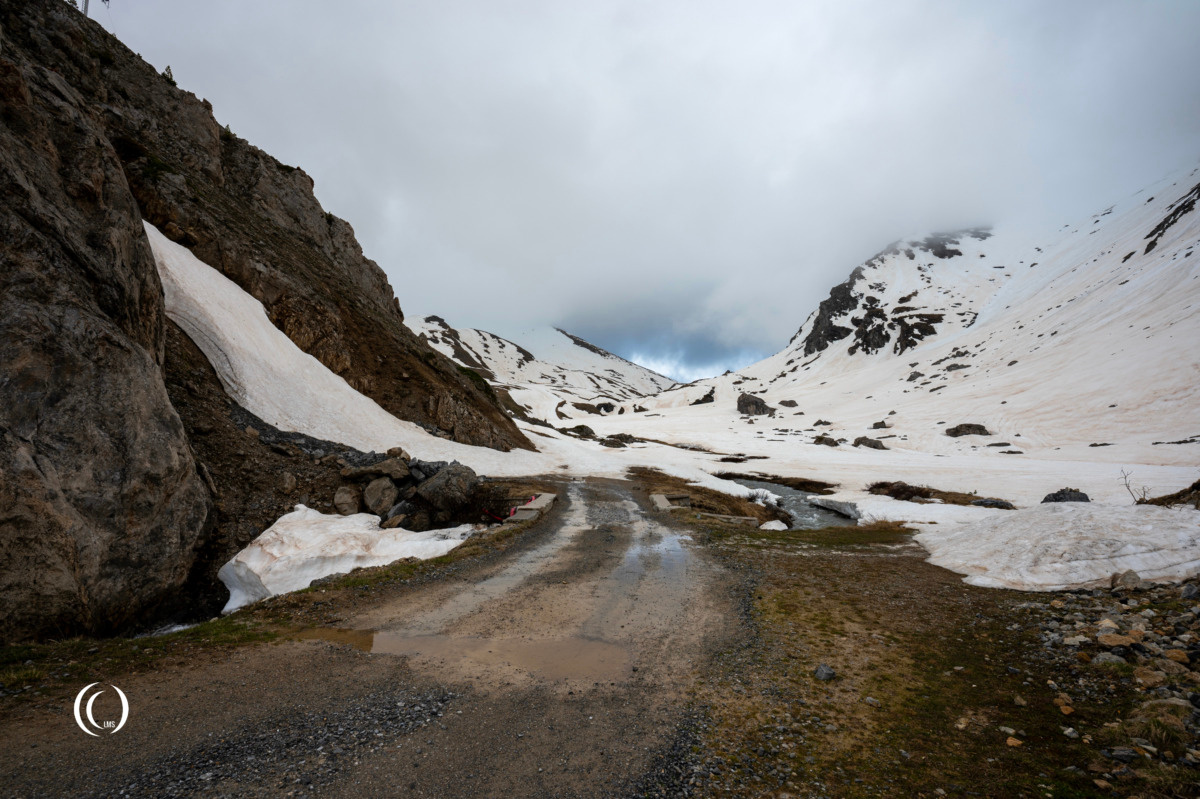
Construction

The construction of Ouvrage Pas du Roc already started near the end of 1931, but it would still be under construction at the outbreak of World War Two in June 1940. The work has to be done under harsh mountain conditions, while the location is hard to reach during the winter months when snow is blocking the access roads. This changes somewhat when the cable car becomes effective and building supplies can be shipped this way.
Although the installed weaponry was operational, some of the blocks never received their full armament. Parts of the project were never fully completed like the mixed entrance and the kitchen (which will be improvised in the rooms intended for the infirmary). The chimney block is never poured, although the construction site is already excavated, leaving a gaping hole in the rock above the entrance block.
During the French mobilisation in August 1939, the workers are recruited into the army and stationed on-site to speed up the construction work, which is now under direct supervision of the French Army. Between September and October of 1939 Block 1 is poured and the essential equipment installed in the interior.
History
Italian Invasion – First Battle of the Alps

Ouvrage Pas du Roc was in the thick of the fighting during the Italian Invasion in June 1940. Italian field artillery pounded the work and specifically Block 1 on the 21st to the 23rd of June. De structures suffered little damage, although the cable car is put out of operation on June 22. On the early morning of the 24th of June, under cover of the fog the Italian Alpini (mountain troops) managed to infiltrate the Vally of Fréjus and attack Pas du Roc, which is beaten off thanks to the artillery of the neighbouring structures Ouvrage Le Lavoir, Arrondaz and Fort du Sapey.
In its turn Pas du Roc aides further attacks on Arrondaz and the outpost (AP) of Fréjus with its artillery and targets the advancing Italian troops in the valley of Fréjus when the fog clears.
Unfortunately when the Franco-Italian Armistice becomes effective on June the 25th, Ouvrage Pas du Roc and its neighbouring structures are forced to surrender. The Ouvrage is taken over by the Italian forces and disarmed.
Second Battle of the Alps
In mid-september of 1944 the Free French Forces occupy Pas du Roc after repelling the German Forces from nearby Modane and Fort du Sapey. But the German Army recaptures the Ouvrage in a counter attack. While the French forces fall back to the Ouvrage Le Lavoir further down in the valley to the Southwest, the Germans manage to keep hold of the position as an observatory and shelter until they retreat in April 1945.
Post-war
During the Cold War in the 1950s Ouvrage Pas du Roc becomes operational again until it was again disarmed and finally abandoned in the late 1970s.
Mixed Entry
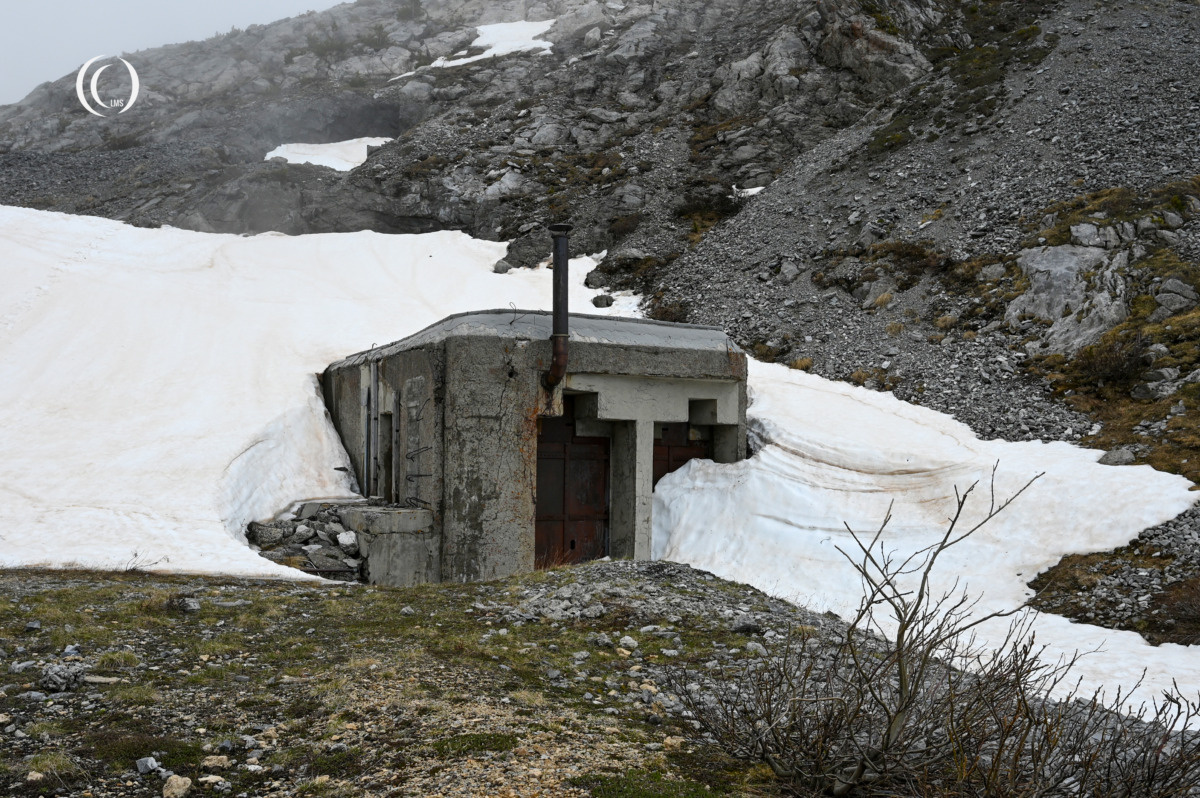
This block is a mixed entrance for infantry and ammunition and also forms the upper station of the cable car (téléphérique) connected to the Pont Nuaz lower station. The latter was located along the road leading from the Charmaix to the Lavoir. The block was never finished and its planned armament of three FM slots and a GFM bell weren’t installed.

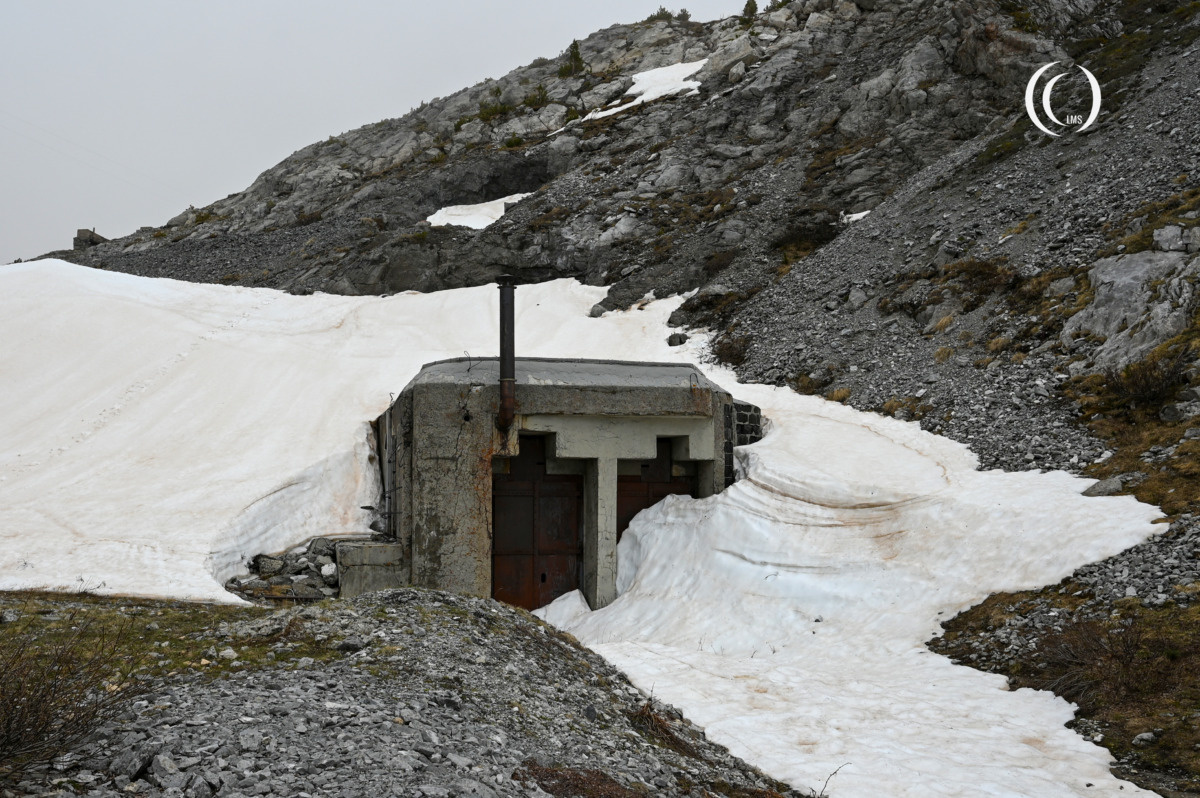
Cable car station
You can see the slots for the cable above the doors. Inside the Mixed Entry block the cable station installations are still in surprising good shape.

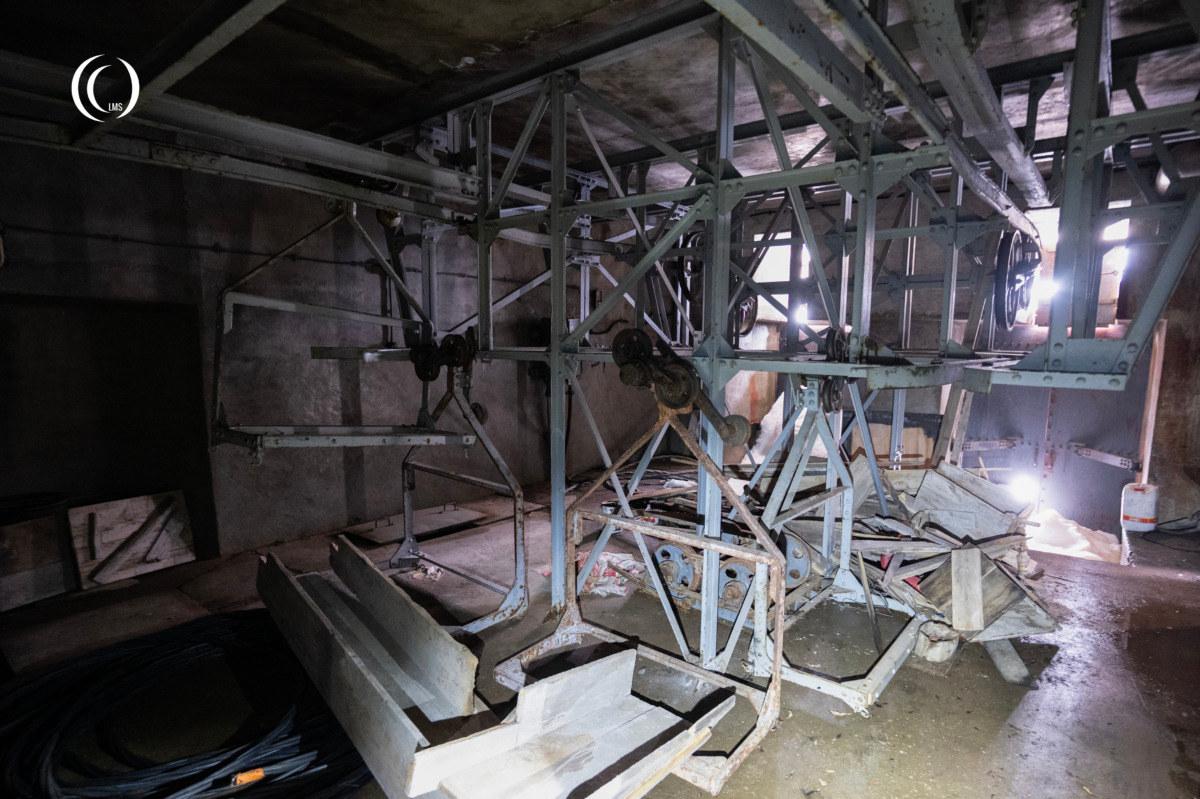
Block 1 – Infantry Casemate
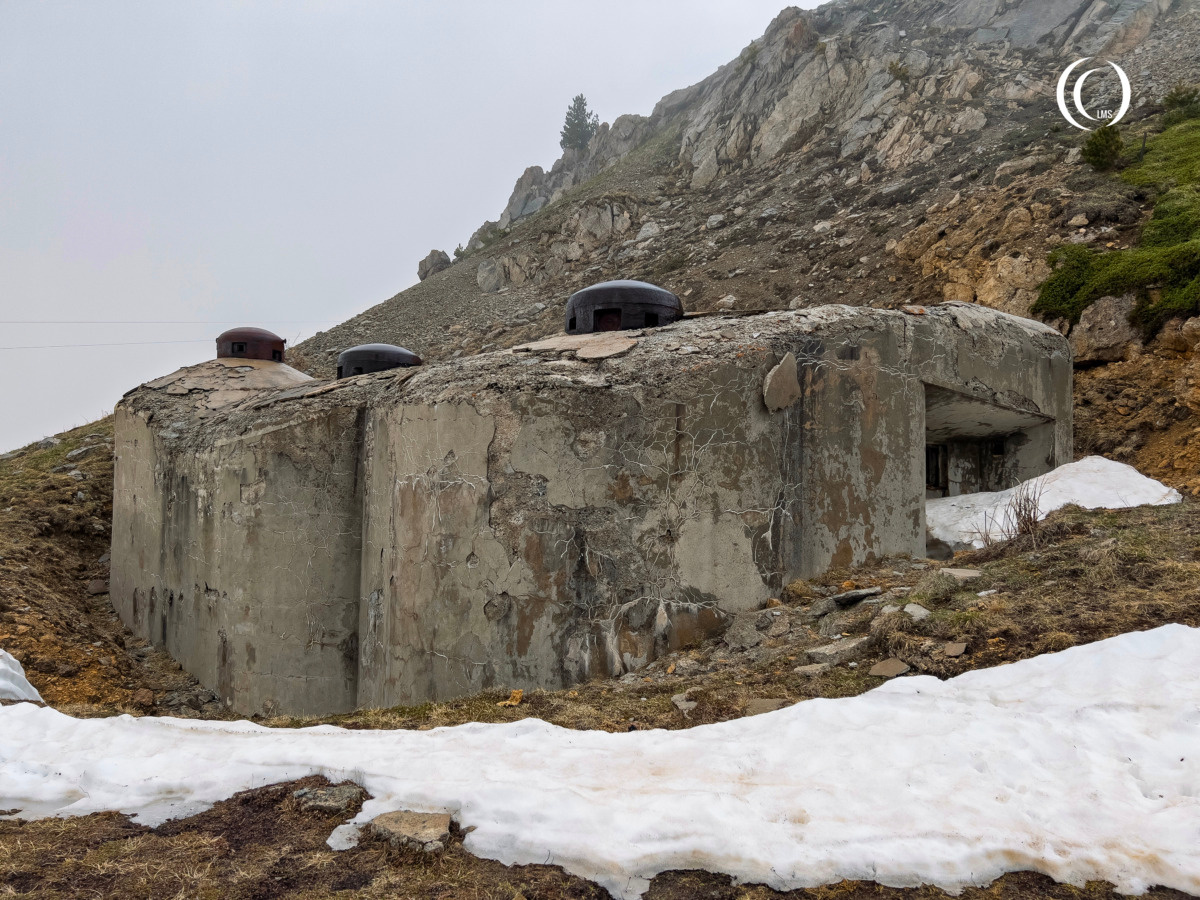
This infantry block protects the Southeast corner of the work in the direction of the Col d’Arrondaz and the Col du Fréjus. The armament consists of one GFM type A cloche (bell), one grenade launcher cloche, two heavy twin machine gun cloches and one heavy twin machine gun embrasure with diamond ditch. At the bottom of the ditch is an emergency exit.
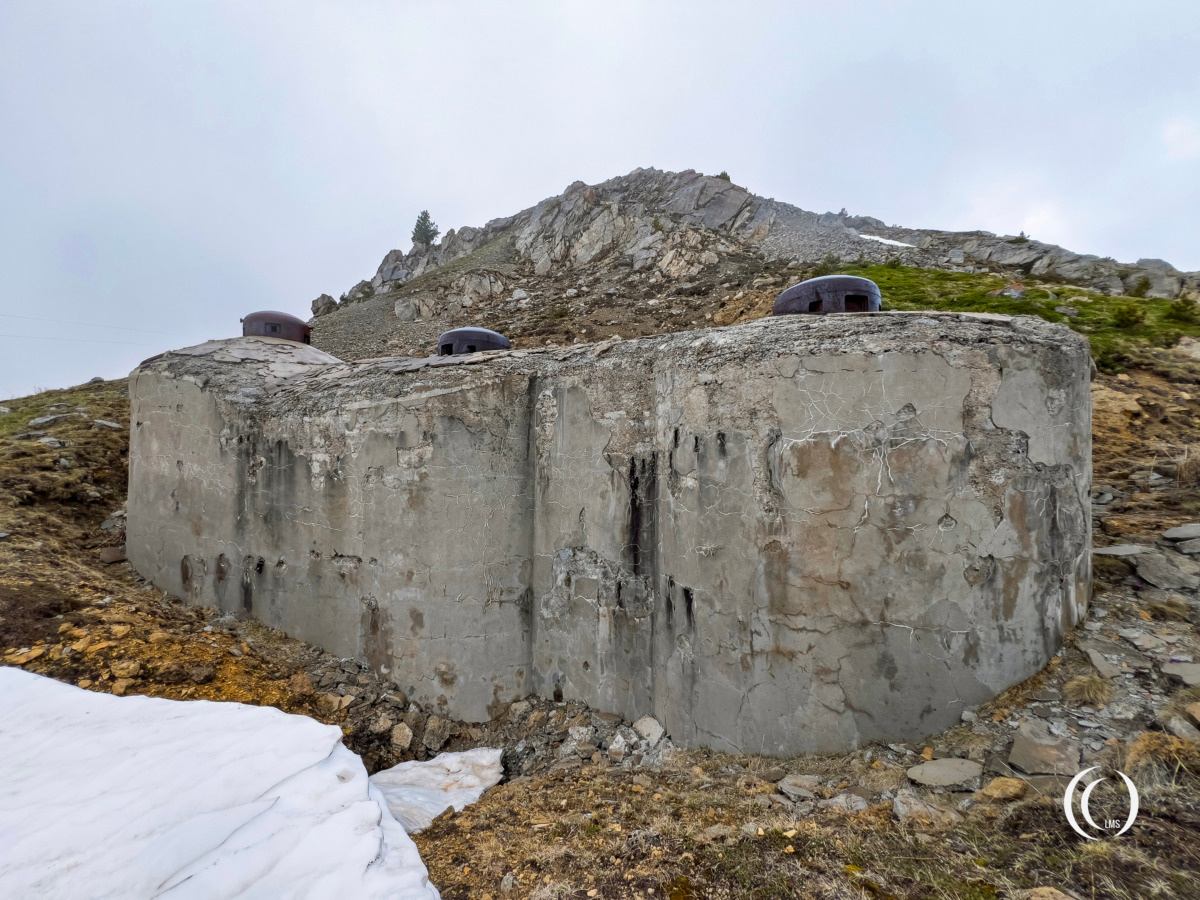




Block 2 – Artillery Observatory
This small observation block is on the South side of the work a little higher above block 1, with a great view of the surroundings. The block had a VDP observatory bell with a periscope.


Block 3 – Artillery Casemate

This artillery block is embedded in the mountain side facing West. It has two 75/31 guns and a FM stand located in the guard house right of the gun embrasures. The guard house can be accessed from the B3 emergency exit.










Block 4 – Artillery Casemate

This artillery block is located on the northwestern side of the work and covers the flank of Ouvrage d’Arrondaz to the northeast with two slots of 81mm mortars and to the southeast on the direction of the Fréjus pass with two slots of mortars of the same type. The block also has a slot for a 50mm mortar, two FM slots for close quarters defense and a GFM type A bell. Underneath the mortar slots on both sides of the casemate is a diamond ditch of which one has an emergency exit at the bottom.
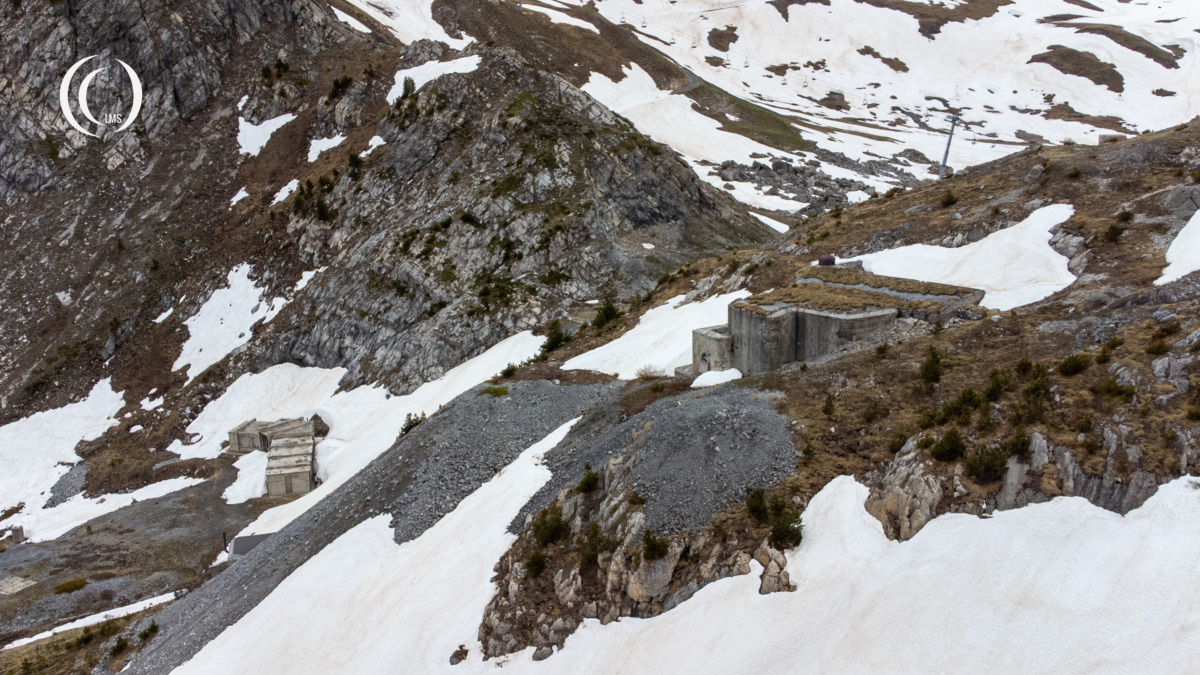
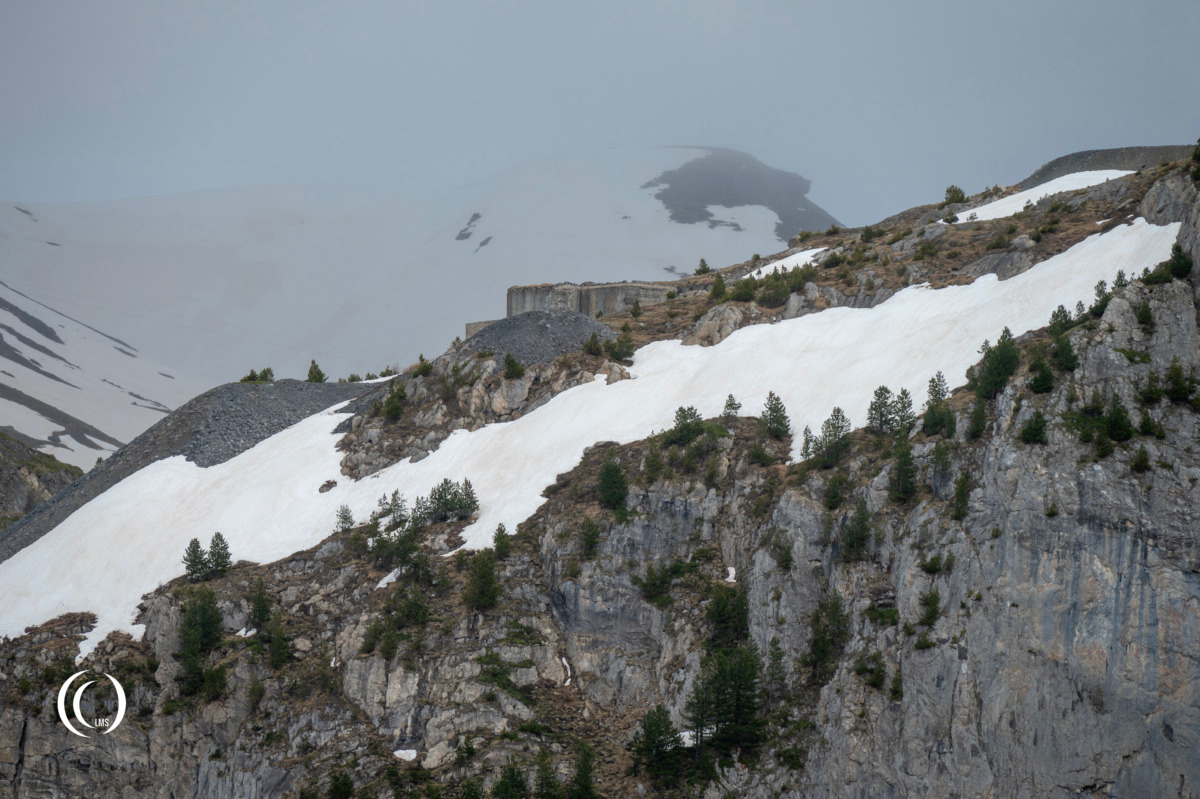







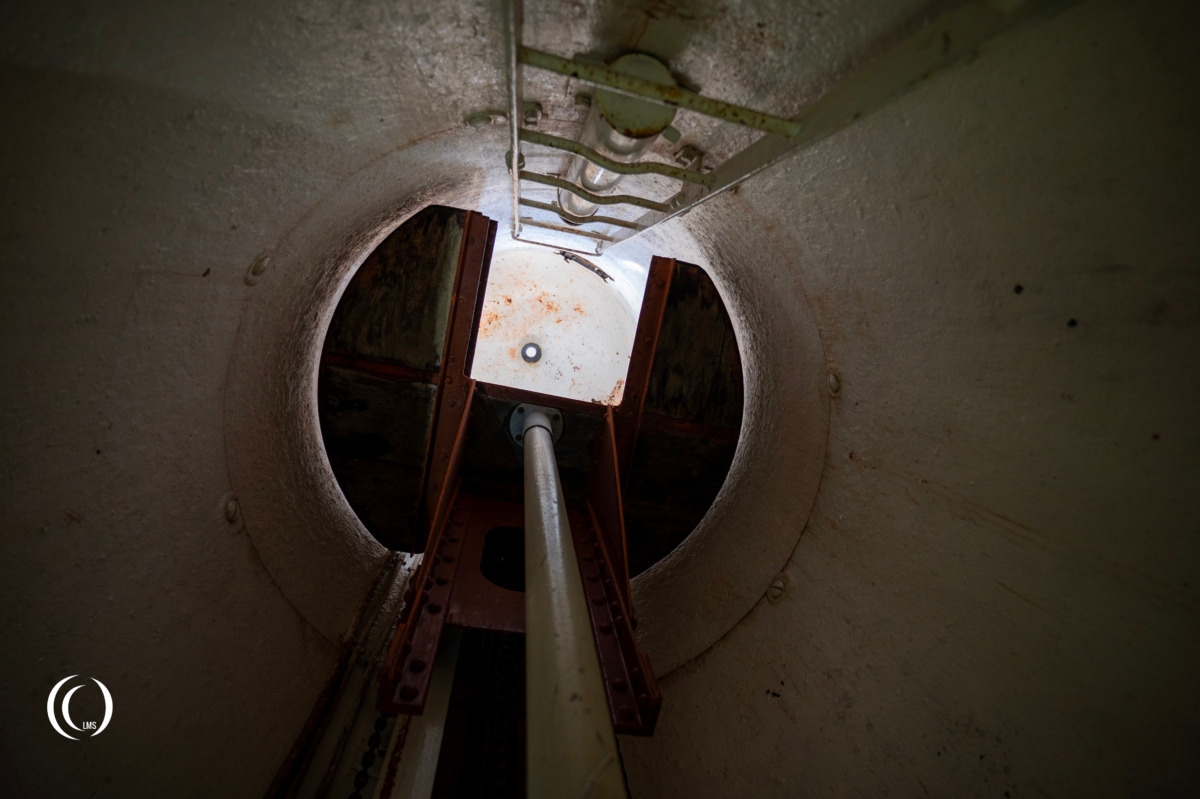


Peacetime Barracks



Power plant
At the outbreak of World War Two Ouvrage Pas du Roc was equipped with two Alsthom type VI/JmR 150 6-cylinder engine generators of 52 HP together with a Alsthom alternator type AP7-67 delivering 35 KW. A CLM 1PJ 65 auxiliary generator of 8hp coupled to a dynamo-compressor was also installed.
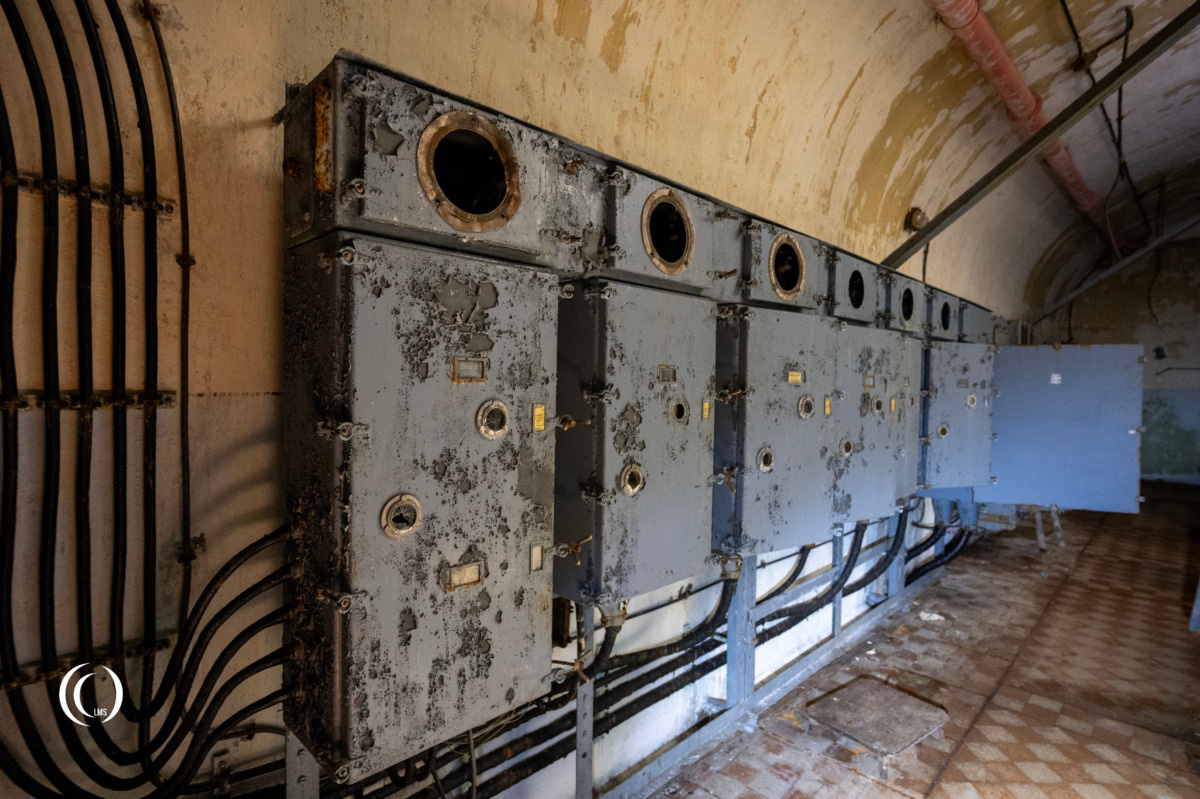


Visit
Ouvrage Pas du Roc lies along a small mountain road and is not open to the public.